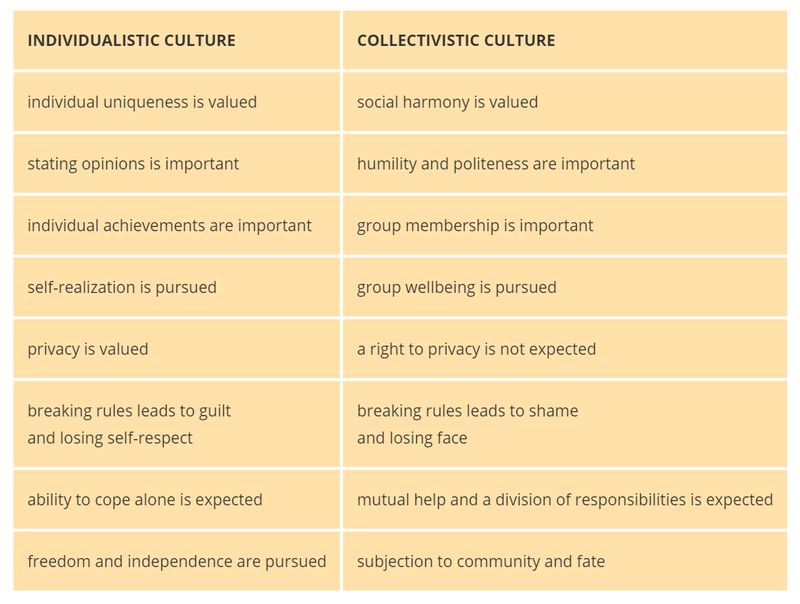The Effect of Culture on Our Behavior
- A culture is an influential living system which is composed of the shared beliefs, values, and behavior of a group.
- Sharing a cultural environment increases cohesion and facilitates interaction and working toward shared goals.
- Culture is passed on from one generation to the next.
- We can distinguish between the surface and deep level aspects of a culture.
- Surface culture is what can easily be observed by an outsider, for example the German obsession over beer and sausages.
- Surface aspects include typical dress codes, manners, foods, etc.
- Deeper aspects of cultures are only detectable by members of the culture and involve beliefs, values and attitudes.
- Cultures shape our schemas.
- Different cultures are reflected in many types of behavior and are practically "programmed" into our minds.
- Culture affects our attention, behavior and the interpretation of stimuli.
- People from different cultures might have very different experiences of the same event.
- Cultures also have culture-specific norms, or rules of behavior.
- These concern customs and attitudes toward such things as mate selection, gender roles, emotional expressions, the use of alcohol, corporal punishment, elderly people, appreciation for honesty, or power relations.
Cultural Dimension
- Human personality is described in terms of personality traits, which may help distinguishing one individual as more emotional than another.
- We can use cultural dimensions to describe and compare cultures similarly.
Collectivistic and Individualistic Cultures
- A key interest in psychological research has been the differences between individualistic and collectivistic cultures.
- Individualistic cultures encourage independence and expression whereas collectivistic cultures encourage sticking close to family and community.

Cultural Impacts
- A culture primarily refers to broad cultural circuits, such as Western culture or Asian culture.
- Cultural circuits can, however, be internally very diverse, comprising of several nations and their respective subgroups.
- Work communities, schools, or families are examples of cultural subgroups that generally have rich systems of beliefs, behaviors, and norms.
- Become a part of these groups is part of the socialization process.
- It might be difficult to notice the impact of these groups until you see someone from another group.
